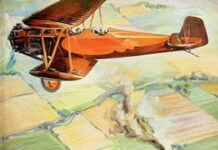The move from wooden to metal construction quickened pace in 1930. High wing monoplanes became increasingly common with smaller aircraft, although very large bombers and airliners were still mainly biplanes. The new contender, cantilever, low wing monoplanes kept knocking at the door and there was some success.
Meanwhile, the Great Depression stifled good ideas among commercial airliners that might otherwise have done well. By contrast, sales of smaller utility aircraft and personal transport continued to grow, as affordable airplanes found new markets.
However, the real action was on the military front. Germany unilaterally began to rearm with technically superior aircraft. The Soviet Union continued to churn out fighter aircraft and large bombers in huge numbers. The drums of war were beating quietly, but at this stage the arena was not yet known.

https://commons.wikimedia.org/wiki/File:Ju52_100831.jpg
JANUARY 1930
American aviator Frank Hawks attempts to take off in a Lockheed Air Express from a soggy field in West Palm Beach, Florida. The plane crashes into a row of three parked aircraft. Hawks walks away unharmed.
A Ford 5-AT-C Tri-Motor takes off in poor weather on a scheduled passenger flight to Los Angeles, California from Tijuana, Mexico. The pilot attempts to return, but the aircraft crashes in Oceanside, California, and catches fire, killing all 16 people on board. This was the deadliest aviation accident in American history at the time.
American Airlines forms on January 25, 1930. It will become the world’s largest airline when measured by fleet size, scheduled passengers carried, and revenue per passenger mile.
French Potez 39 Reconnaissance and Observation Monoplane
The Potez 39 replaced the Potez 25 and Breguet 19 machines then in service, after its first flight in January 1930. Aircraft were the only ‘eyes in the sky’ back then besides static balloons. They therefore delivered an essential product, and they had small teeth too to counter attack their enemy.
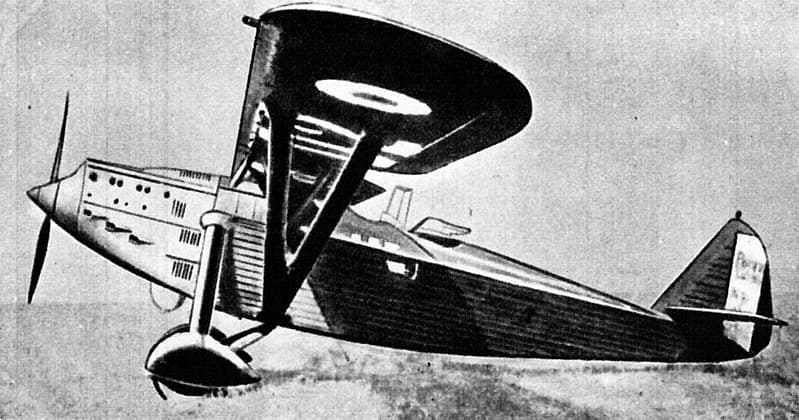
https://commons.wikimedia.org/wiki/File:Potez_39_PD.jpg
The Potez 39 parasol monoplane, with tailwheel-undercarriage was the first all-metal Potez aircraft. The crew of two sat in open, tandem cockpits. The observer was armed with two Lewis machine guns on a ring mounting, while the pilot had a single synchronized , forward-firing Darne machine gun.
Light bombs could also be carried in a small internal bomb-bay, and on external racks. A fixed camera was included, operating through a hatch in the fuselage floor. The Potez 39 continued to serve in training units until the German-French armistice of June 1940, at which time 41 remained in service.
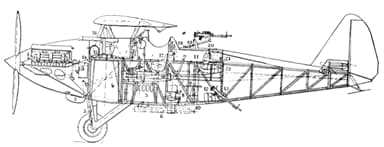
https://commons.wikimedia.org/wiki/File:Potez_39_A2_side_drawing_L%27Aerophile_January_1931.png
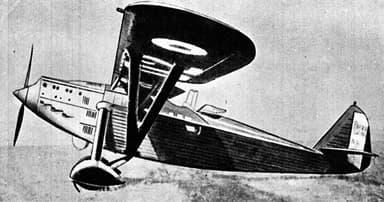
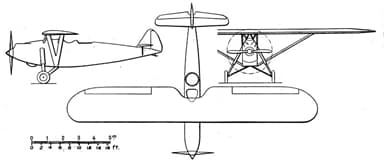
https://commons.wikimedia.org/wiki/File:Potez_39_3-view_NACA_Aircraft_Circular_No.114.jpg
The general characteristics of the Potez 39 were as follows:
- Length 33 ft, height 11 ft, wing span 52.5 ft, wing area 377 sq ft
- Empty weight 3,289 lb, gross weight 4,960 lb, pilot and rear gunner
- Hispano-Suiza 12H V-12 water-cooled piston engine, 581 hp
- Max speed 155 mph, range 500 mi, ceiling 23,000 ft, climb 11,500 ft / 9 min
- One fixed, forward, and two rear-mounted machine guns, 264-pound bomb load
French Farman F.300 High Wing, Strut-Braced Medium Airliner
The Farman F.300 was a medium-size airliner for its time, with fixed tailskid undercarriage and a trimotor layout popular with several contemporary manufacturers. Both the pilot and eight passengers had fully-enclosed cabins. No further details of this accommodation are available. The maiden flight was on January 13, 1930.

https://en.wikipedia.org/wiki/File:Farman_F.300_L%27Aerophile_Salon_1932.jpg
Twelve of the 22 Farman F.300s built served in Farman’s own airline, comprising half its fleet. A specially-built variant, the F.302 was specifically built as a single-engine machine, to make a successful attempt at a number of world records. There was also a prototype F.310 seaplane variant, but this was unsuccessful.
The specification of the Farman F.301 was as follows:
- Length 43.5 ft, height 10.5 ft, wing span 62.5 ft, wing area 760 sq ft
- Empty weight 5,754 lb, gross weight 9,987 lb, crew one, eight passengers
- Three Salmson 9Ab 9-cylinder air-cooled radial piston engines, 230 hp each
- Maximum speed 140 mph, cruise 120 mph
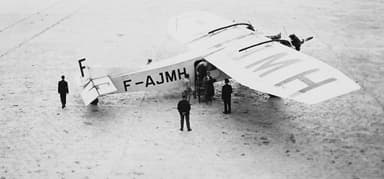
https://www.flickr.com/photos/skylarkair/8183177622

https://en.wikipedia.org/wiki/Farman_F.300#/media/File:Farman_F.306_Skica.jpg
FEBRUARY 1930
A French Farman F.63bis Goliath suffers a tailplane structural failure during a flight from Paris to London with six people on board. The pilot tries to land at an emergency strip in Kent, England, but the plane stalls and crashes. Two passengers die, and the other two passengers and both crew suffer injuries.
A fire destroys the workshops of the Société d’Aviation Letord at Meudon, France, as well as aircraft, including the first Couzinet 20 and the Couzinet 27 Arc-en-ciel II.
The future José Martí International Airport opens as Rancho-Boyeros Airport at Havana, Cuba.
Polish RWD 4 High Wing Cantilever Sports Plane
The RWD 4 was a private initiative of a team of young designers who focused on building light sports planes. This version retained their signature fish-shaped fuselage without a direct view forward from the pilot’s seat, although they narrowed the profile to improve the forward view through the side windows.
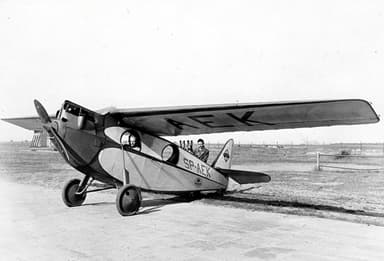
https://en.wikipedia.org/wiki/File:RWD_4_SP-AEK.jpg
The team produced a total of eight aircraft after the first flight in the Spring of 1930, including the initial batch of three. The RWD 4 was a wood construction, cantilever monoplane, with a plywood-covered rectangular cross-section that narrowed slightly towards the top. The trapezoidal wing was a single unit enclosed in plywood and canvas.
The crew of two sat in tandem, with dual controls. The cockpits were open to the sides, with individual doors on the right. RWD 4s were used with some success in competitions, and also for training and glider towing in regional aero clubs.
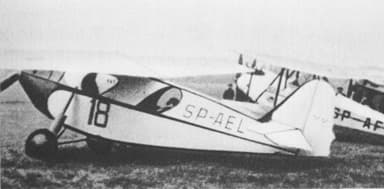
https://commons.wikimedia.org/wiki/File:RWD_4.jpg
The specification of the RWD 4 was as follows:
- Length 23 ft, height 7.5 ft, wing span 34.5 ft, wing area 160 sq ft
- Empty weight 877 lb, cross weight 1,720 lb, crew one, one passenger
- Cirrus Hermes II 4-cylinder air-cooled in-line piston engine, 105–115 hp
- Max 127 mph, cruise 110 mph, range 500 mi, ceiling 16,000 ft, climb 3,200 ft / 6 min
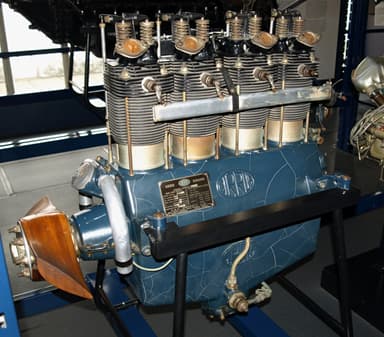
https://en.wikipedia.org/wiki/ADC_Cirrus#/media/File:ADCCirrusII.JPG
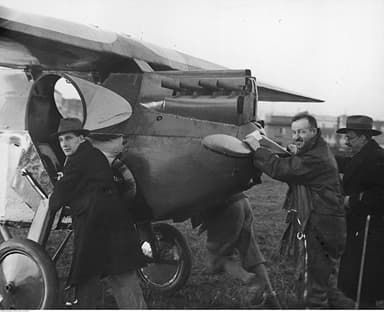
https://commons.wikimedia.org/wiki/File:Robert_Hirszbandt_RWD-4.jpg
American Bellanca Airbus / Aircruiser Hybrid ‘Workhorse’
The Bellanca Aircruiser, and its sister Airbus were hybrid aircraft for use in passenger or cargo roles, and available with wheels, floats or skis. They also served in both military and transport roles. Some 23 were built after the first flight in 1930.
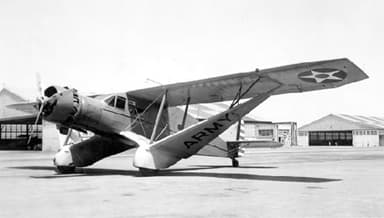
https://en.wikipedia.org/wiki/File:Bellanca_C-27C_Airbus.jpg
The first Airbus, the P-100 was capable of carrying 12 to 14 passengers depending on the cabin interior configuration, with later versions carrying up to 15. However, despite being efficient it did not sell well due to having a water-cooled engine. But the Aircruiser that followed was more successful with an air-cooled supercharged radial engine.
It could carry a useful load greater than its empty weight by the mid-1930s, at a speed between 145 and 155 mph. This was a performance that multi-engine Fokkers and Ford Trimotors could not come close to matching. However, the aircraft’s life was cut short, when United States federal regulations prohibited single-engine transports on United States airlines.
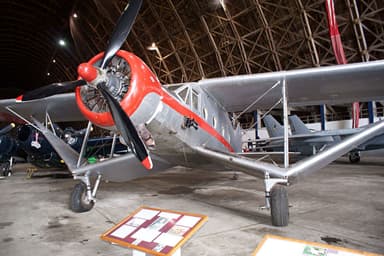
https://commons.wikimedia.org/wiki/File:Bellanca_Aircruiser_LNose_TAM_3Feb2010_(14443619439).jpg

https://commons.wikimedia.org/wiki/File:Bellanca_Airbus_cabin_Aero_Digest_September,1930.jpg
The specification of the 66-70 Aircruiser was as follows:
- Length 43.5 ft, height 11.5 ft, wing span 65 ft, wing area 520 sq ft
- Empty weight 6,072 lb, gross weight 10,000 lb, crew one, sixteen passengers
- Wright R-1820 Cyclone 9 9-cylinder supercharged air-cooled radial engine, 710 hp
- Maximum speed 165 mph, range 700 mi, service ceiling 22,000 ft.
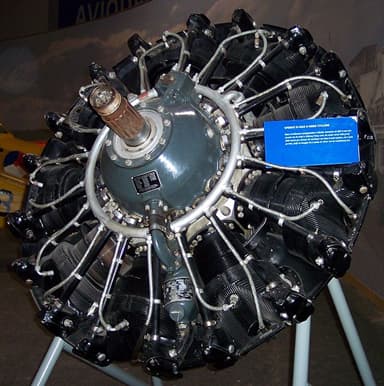
https://en.wikipedia.org/wiki/Wright_R-1820_Cyclone#/media/File:Wright_R-1820_G.jpg
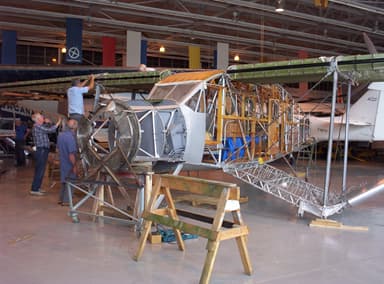
https://commons.wikimedia.org/wiki/File:Bellanca_Aircruiser.JPG
MARCH 1930
German Arado Ar 64 Sesquiplane Fighter Aircraft
The Arado Ar 64 was not a particularly successful aircraft. However, it was noteworthy because it was among the first fighters produced when Germany abandoned the restrictions of the Treaty of Versailles, and began rearming. Some 24 of the airplanes were produced for the German Luftwaffe air force, after the first successful test flight in the spring of 1930.

https://en.wikipedia.org/wiki/File:Arado_64_San_Diego_Air_%26_Space_Museum.jpg
The Arado Ar 64 was a sesquiplane-style biplane with a smaller lower wing. The fuselage frame was made of steel tubing with fabric covering. The wings were covered with the same material but framed in wood. There were two derivatives developed after experimenting with various engines.
The Arado Ar 64D version used a geared Jupiter VI radial engine driving a four-bladed propeller. While the subsequent Arado Ar 64E used the direct-drive alternative, with a two bladed propeller. The latter was used primarily as a training aircraft.
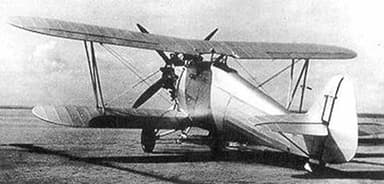
https://www.sas1946.com/main/index.php?topic=32709.0
The specification of the Arado Ar 64D was as follows:
- Length 27.5 ft, height 9.5 ft, wing span 32.5 ft, wing area 265 sq ft
- Empty weight 2,668 lb, max take-off 3,704 lb, crew one
- Siemens (Bristol) Jupiter VI 9-cyl. air-cooled radial piston engine, 530 hp
- Max 160 mph at 16,404 ft, cruise 135 mph, ceiling 17,700 ft, 3,200 ft / 1.5 min
- Two fixed, forward-firing synchronized MG 17 machine guns

https://www.sas1946.com/main/index.php?topic=32709.0

https://www.sas1946.com/main/index.php?topic=32709.0
German Focke-Wulf A 32 Bussard Small Airliner
Focke-Wulf developed the A 32 Bussard rapidly, after Messerschmitt became unable to deliver aircraft to Nordbayerische Verkehrsflug (NOBA) airline on schedule. It based the design on the earlier Focke-Wulf A 20 Habicht, which was a high-wing cantilever monoplane with fixed tailskid undercarriage.
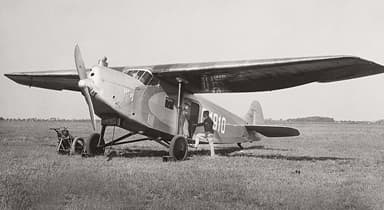
https://en.wikipedia.org/wiki/File:Focke_Wulf_A_32_Annuaire_de_L%27A%C3%A9ronautique_1931.jpg
However the A32 (of which only five were built) had a revised fuselage with greater seating capacity than the A20, and an engine of over twice the power. The two A32s sold to NOBA became part of Luft Hansa’s fleet after it absorbed the smaller company.
The enclosed flight deck was incorporated in the fuselage ahead of the upper wing. However, the passenger cabin, of which we have no further details, was aft and under the wing. The nose-mounted piston engine was cooled by a radiator mounted in the airstream, on the belly of the fuselage under the flight deck.
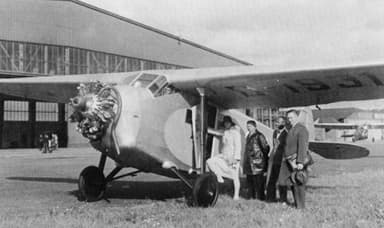
http://aviadejavu.ru/Images6/MM/MM-132/1012-42-2-2.jpg
The specification of the Focke-Wulf A 32 was as follows:
- Length 40 ft, height 10.5 ft, wing span 52.5 ft, wing area 371 sq ft
- Empty weight 3,230 lb, gross weight 5,070 lb, crew 1 / 2 pilots, 6 / 7 passengers
- Junkers L5 six-cylinder, water-cooled, inline piston engine 310 hp
- Max speed 120 mph, range 560 mi, ceiling 14,800 ft, climb 490 ft / min

http://aviadejavu.ru/Site/Crafts/Craft31794.htm
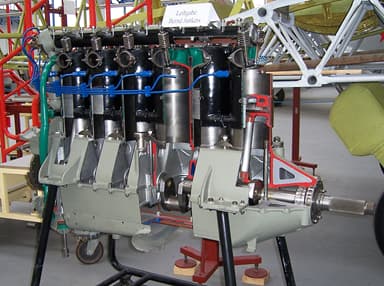
https://en.wikipedia.org/wiki/Junkers_L5#/media/File:Junkers_L_5_im_Technikmuseum_Hugo_Junkers_Dessau_2010-08-06_01.jpg
APRIL 1930
The prototype of the Latécoère 340 trimotor parasol-winged flying boat breaks up in the air and crashes, while being demonstrated for a French Navy official, killing both men on board. No further examples of the aircraft are built.
United States Navy Lieutenant Apollo Soucek sets a world altitude record, climbing to 43,166 feet in the Wright XF3W-1 Apache.
American Frank Hawks arrives at New York City after an eight-day journey in the glider Texaco Eaglet, while being towed by a Waco ASO biplane. The flight demonstrates the feasibility of towing gliders over long distances.
American Milton P. Covert’s Waco biplane loses altitude and crashes on a railroad embankment while approaching the landing area during an air show at Fayetteville, Tennessee. At least nine spectators are killed and about 20 injured. Covert survives, although an angry mob surrounds him after the incident
Soviet Polikarpov 1-5 Biplane Trainer That Converted to a Fighter
The Polikarpov 1-5 was developed under the Soviet Five-Year Plan to rearm. Some 803 trainer aircraft were produced between 1931 and 1936 after the first flight on April 29, 1930, and they became default Soviet standard advanced trainers. Then, after the German 1941 Barbarossa invasion they converted to light ground-attack aircraft and night bombers, with four machine guns and bomb racks added.
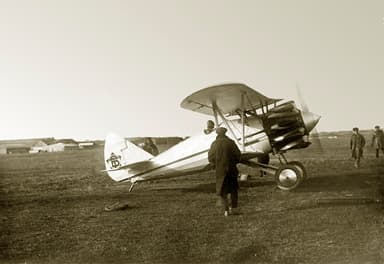
Image Link
The Polikarpov 1-5 was a single-seat biplane with the upper wing slightly larger than the lower, and a fixed landing gear with a tailskid. It was of mixed construction. The upper wings had duralumin frames, while the lower ones were wood, and the fuselage structure was made of welded steel tubes.
A fabric skin, laced for tightness, covered over the wings and most of the fuselage. However the front fuselage as far back as the rear cockpit, and the tail skid shock absorber had detachable panels allowing easy access. A fire extinguishing system protected the fuel pump, inlet pipe and carburetor, with a fireproof bulkhead separating the engine and fuel tank as an additional precaution.

https://en.wikipedia.org/wiki/File:Polikarpov_I-5_3-view.svg
The general characteristics of the Polikarpov 1-5 were as follows:
- Length 22 ft, height unknown, upper wing span 33.5 ft, wing area 229 sq ft
- Empty weight 2,059 lb, gross weight 2,987 lb, crew one
- Licensed Shvetsov M-22 (Bristol) 9-cylinder, single-row radial engine, 480 hp
- Max 173 mph, range 410 mi, ceiling 24,600 ft, 3,300 ft / 1.6 min
- Two 0.30 inch PV-1 machine guns, two 22-pound weight bombs
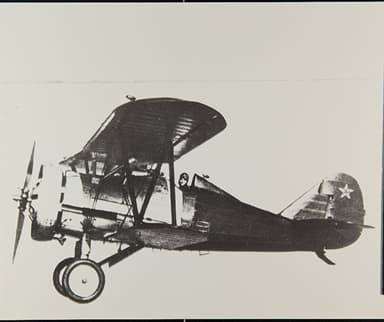
https://commons.wikimedia.org/wiki/File:Polikarpov,_I-5_(VT-12),_(5956290080).jpg
MAY 1930
American Amy Johnson makes the first solo flight from England to Australia by a woman, flying from Croydon to Darwin in a de Havilland Gipsy Moth.
French pilot Jean Mermoz makes the first nonstop commercial flight across the South Atlantic Ocean, flying from Dakar, Senegal, to Natal, Brazil, in the float-equipped Latécoère 28-3 mail plane. He is forced to ditch on the return flight. He, his two companions, and the mail are saved but the aircraft sinks and is lost.
Ellen Church becomes the world’s first female flight attendant, working for Boeing Air Transport.
Japanese Mitsubishi K3M High Wing Monoplane Trainer
The Mitsubishi K3M high wing monoplane was designed as a trainer by British aeronautical engineer and aircraft designer Herbert Smith from Sopwith, who was working in Japan for Mitsubishi at the time. The pilot and gunner were in separate cockpits. There was also an enclosed cabin for an instructor and two pupils between them.

https://en.wikipedia.org/wiki/File:Mitsubishi_K3M.jpg
The Mitsubishi K3M was a strut-braced, high-wing cabin monoplane, with fixed wide-track landing gear, and a single mid-range, radial piston engine. Some 625 aircraft were produced, shared between Kyushu Hikoki K.K. and Aichi Kokuki companies. Production continued through to 1941.
The aircraft served the Japanese Navy in a variety of roles. These duties included trainer, light transport, liaison aircraft, utility aircraft and occasionally light bomber. When the war ended for Japan, surviving examples were pressed into service as liaison aircraft in a variety of national markings.
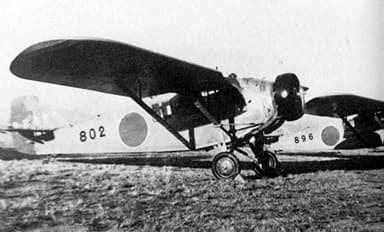
https://upload.wikimedia.org/wikipedia/commons/5/5c/Mitsubishi-k3m-pine-navy-type-90-trainer-01.png
The specification of the Mitsubishi K3M3 version was as follows:
- Length 31.5 ft, height 12.5 ft, wing span 51.9 ft, wing area 371 sq ft
- Empty weight 2,998 lb, gross weight 4,850 lb, crew two, max five others
- Nakajima Kotobuki-2 580 hp, radial engine developed under license
- Max speed 143 mph, range 491 mi, ceiling 29,950 ft, climb 1,726 ft / min
- Two 0.303 inch, type 92 machine guns rear-mounted, 66 pound bomb load
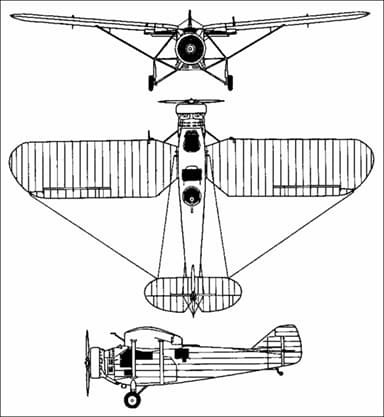
https://en.wikipedia.org/wiki/File:Mitsubishi_k3m.gif

http://arawasi-wildeagles.blogspot.com/2013/02/mitsubishi-k3m-pine-suzuka-ku.html
American Boeing Monomail Single, Low Wing Transporter
Chief Engineer Charles Monty Monteith faced challenges when he began promoting the Boeing Monomail passenger / mail transporter. That’s because it literally flew in the face of pilot preferences and convention. Nonetheless he persisted, and with the wisdom of hindsight we can agree it charted the path of Boeing’s future.

https://en.wikipedia.org/wiki/File:Monomail.jpg
The Boeing Monomail was unique in terms of the combination of all-metal smooth-skin construction, a semi-monocoque fuselage, low mounted cantilever wings, an anti-drag ring cowl and, most notably, the first recorded use of retractable landing gear.
However, mass production did not follow after the first flight of the Monomail 220 on May 6, 1930. The advanced design was hampered by the lack of suitable engine and propeller technology. By the time these were resolved, the Boeing 247 multi-engine had surpassed it. Regretfully, nothing remains of this remarkable achievement.

Orange Logic – Boeing Monomail Cockpit (boeingimages.com)
The specification of the Boeing Model 221 Monomail was as follows:
- Length 42 ft, wing span 59 ft, gross weight 8,000 lb, pilot and six passengers
- Pratt & Whitney R-1860 Hornet B radial engine, 575 hp
- Max speed 158 mph, cruise 135 mph, range 575 mi, ceiling 14,700 ft
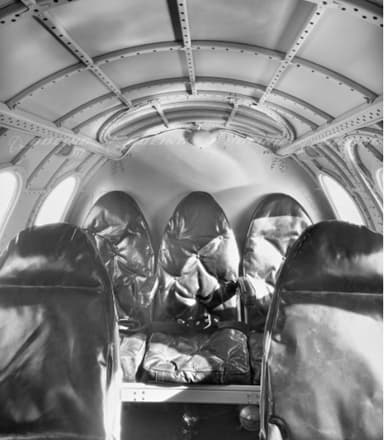
Orange Logic – Boeing Monomail Cockpit (boeingimages.com)
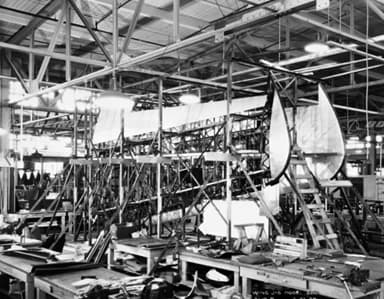
Orange Logic – Boeing Monomail Cockpit (boeingimages.com)
JUNE 1930
A Ford 5-AT-B Trimotor noses down and crashes into the sea, just after takeoff from Boston, Massachusetts for a flight. One of the passengers is killed, the aircraft is damaged beyond repair, but the other 12 passengers and both crew members survive.
French aviator Henri Guillaumet crashes his Potez 25 in bad weather at Laguna del Diamante near Mendoza, while carrying mail between Argentina and Chile. He walks through three mountain passes before reaching a village and safety.
British Handley Page HP.30 Heyford Heavy Biplane Bomber
The Handley Page HP.30 Heyford was the last biplane heavy night bomber to serve with the British Royal Air Force. However, it did become one of the most important British bombers of the mid-1930s during its relatively short service life. Some 125 of the aircraft were produced between 1933 and 1936, after the first flight on June 12, 1930.

https://en.wikipedia.org/wiki/File:Handley_Page_Heyford.jpg
The Handley Page HP.30 Heyford was a mixed construction aircraft, having fabric-covered, two-bay metal-frame wings, but an aluminum monocoque forward section with a fabric-covered frame to the rear. Attaching the fuselage to the upper wing provided a good defensive field of fire for the nose and dorsal guns, as well as the ventral side retractable ‘dustbin’ turrets beneath the fuselage.
Nine squadrons of Heyford bombers formed the major part of the British Bomber Command’s night bomber strength in the late 1930s. They flew many long night exercises, sometimes flying mock attacks against targets in France. However, they began to be replaced in 1937 by Armstrong Whitworth Whitleys and Vickers Wellesleys, and were retired from front-line positions by 1939.
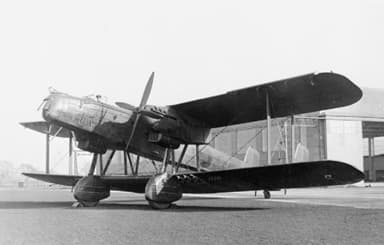
https://en.wikipedia.org/wiki/File:The_Royal_Air_Force_in_the_1930s_HU58005.jpg
The specification of the Handley Page HP.30IA Heyford was as follows:
- Length 58 ft, height 17.6 ft, wing span 75 ft, wing area 1,470 sq ft
- Empty weight 9,200 lb, gross weight 16,900 lb, pilot and three crew
- Twin Rolls-Royce Kestrel II-S V-12 liquid-cooled piston engines, 525 hp each
- Max 142 mph, range 920 mi, ceiling 21,000 ft, 10,000 ft / 15 min
- Two 0.303 inch nose, dorsal and ventral Lewis guns, 2,500 pound bomb load

https://commons.wikimedia.org/wiki/File:Heyford_k5188.jpg
JULY 1930
Japanese Kawasaki KDA-5 Fighter Biplane
The Kawasaki KDA-5 was designed by German aircraft designer Dr. Richard Vogt for the Imperial Japanese Army, to meet their request for a fighter biplane. Five prototypes flew in 1930, whereafter Japanese manufacturer Kawasaki Kōkūki Kōgyō K.K produced 385 of the airplanes designated Army Type 92 Model 1 Fighter.
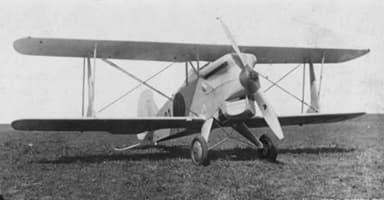
https://commons.wikimedia.org/wiki/File:Kawasaki_Type_92.jpg
The Imperial Japanese Army requested a fighter with unequal sesquiplane wings, and fixed tailwheel landing gear. After constructing the first 180 fighters, Kawasaki Kōkūki Kōgyō structurally strengthened what became the more powerful Army Type 92 Model 1 Fighter.
Both versions of the aircraft saw action with the Imperial Japanese Army Air Force in Manchukuo (Manchuria). However, they were unpopular with flight crew and ground staff, because they were unstable during take-off and landing, and were difficult to maintain, particularly in cold weather.
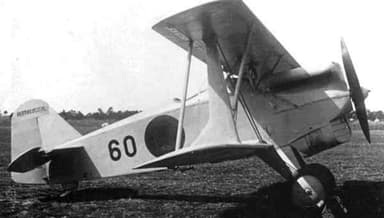
https://commons.wikimedia.org/wiki/File:Kawasaki_KDA-5_(Type_92).jpg
The specification of the Kawasaki KDA-5 92-1 was as follows:
- Length 23 ft, height 10 ft, wing span 31.5 ft, wing area 258 sq ft
- Empty weight 2,822 lb, gross weight 3,747 lb, crew one
- BMW VI V12 water-cooled aircraft engine 630 hp
- Max speed 199 mph, range 528 mi, two forward machine guns

https://en.wikipedia.org/wiki/BMW_VI#/media/File:BMW_VI.jpg
Japanese Yokosuka K4Y (or Navy Type 90 Seaplane Trainer)
The Japanese Yokosuka K4Y was a single engine, two-seat biplane floatplane trainer. Yokosuka Naval Air Technical Arsenal built 211 of the aircraft after the first flight in 1930, although the first airplanes only entered service in 1933. The K4Y was a successful training tool, and it went on to become the Japanese Navy’s basic floatplane trainer throughout the Second World War.
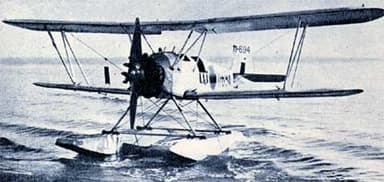
https://en.wikipedia.org/wiki/File:YOKOSUKA_K4Y1.jpg
The Imperial Japanese Navy Air Service’s basic seaplane trainer, the Yokosuka K1Y was still in use from 1925, but it needed replacement. The Yokosuka Naval Air Technical Arsenal’s solution was a single-bay biplane with welded steel-tube fuselage and wooden wings, and it was the first Japanese-designed aircraft using this steel technology.
Production began in 1933, after time consuming experiments with several engines. The K4Y1 started to replace the K1Y from 1933, and remained the Imperial Japanese Navy Air Service’s principal basic seaplane trainer throughout the Pacific war. A few aircraft were released for civilian use, when that phase in World War II ended.

https://commons.wikimedia.org/wiki/File:Yokosuka_K5Y_replica.jpg
The specification of the Yokosuka K4Y1 Seaplane was as follows:
- Length 29.5 ft, height 11.5 ft, wing span 35.5 ft, wing area 318 sq ft
- Empty weight 1,631 lb, gross weight 2,183 lb, two crew
- Gasuden Jimpu 2 seven-cylinder air-cooled radial engine, 130 hp
- Max 101 mph, cruise 58 mph, range 200 mi, ceiling 11,350 ft, 9,800 ft / 30 min
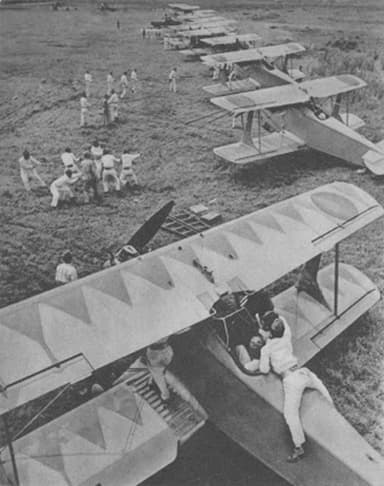
http://arawasi-wildeagles.blogspot.com/2013/09/kawasaki-kda-5.html
AUGUST 1930
The Imperial Japanese Navy practices dive bombing for the first time. It uses unknown fighters to sink the retired protected cruiser Akashi, with eight-pound weight practice bombs in Tokyo Bay.
A Ford 5-AT-C Tri-Motor was attempting to avoid a thunderstorm in poor weather on a domestic passenger flight in Czechoslovakia from Kbely Airport in Bratislava to Brno. It banks sharply to avoid a 115-foot-tall smokestack, strikes the ground, and crashes killing 12 of the 13 people on board.
Polish PZL P.7 High Wing Monoplane Fighter
The Polish PZL P.7 was the main fighter aircraft of the Polish Air Force between 1933 and 1935. Some were still in service when World War II broke out. It was the culmination of work begun in 1927, when designer Zygmunt Puławski designed an all-metal, metal-covered monoplane fighter with a high gull wing, giving a pilot an optimal view. Some 151 were built.
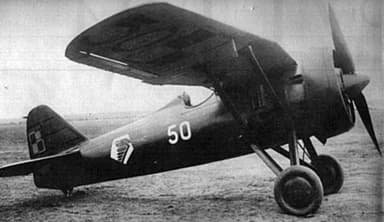
https://en.wikipedia.org/wiki/File:PZL_P7.jpg
The advanced PZL P.7 followed the lead of the earlier PZL P.6. Although it had a more powerful Bristol Jupiter VII F engine, with a supercharger for high altitude performance. Thus it was a duralumin-covered, braced, high-wing monoplane.
The fuselage was framed in the front section, and semi-monocoque in mid and tail sections with an oval cross-section. The two-spar wing was of trapezoid shape – thinner by the fuselage – with a duralumin sheet supported by two struts on either side. The fuel tank was unusual in that the pilot could jettison it in a fire.
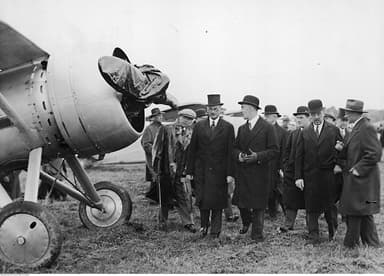
https://commons.wikimedia.org/wiki/File:PZL_P7_PIC_1-M-1292-2.jpg
The specification of the PZL P.71a was as follows:
- Length 23.5 ft, height 9ft, wing span 34 ft, wing area 185 sq ft
- Empty weight 2,227 lb, gross weight 3,106 lb, crew one
- Polish Skoda Works Jupiter VIIF 9-cylinder air-cooled radial piston engine
- Supercharged engine rating 527 hp, normal rating 485 hp
- Max speed 197 mph, range 350 mi, ceiling 27,149 ft, 9,843 ft / 5 min
- Two 0.30 inch Vickers Model E machine guns (initially)
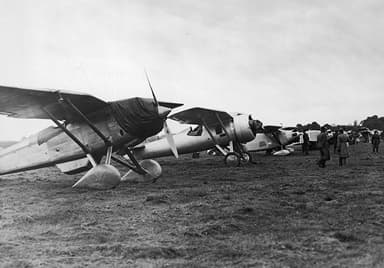
https://commons.wikimedia.org/wiki/File:PZL_P8_P7_Image4.jpg
French Latécoère 380 Flying Boat Airplane for Postal Routes
The Latécoère 380 was intended for use on Aéropostale’s mail routes to South America, although three military examples followed in 1934. It followed conventional flying boat design, with a parasol wing braced to sponsons on the fuselage sides, and two engines mounted in a tandem push-pull pair.

https://en.wikipedia.org/wiki/File:Late_380.jpg
The Latécoère 380 was an effective design that set six world seaplane records in 1931. These achievements included three speed-with-load-over-distance records, and a closed circuit distance-with-load record of 1,372 miles. However, only two civilian versions were built after it first flew on August 24, 1930.
The specification of the Laté 380 version was as follows:
- Length 61.5 ft, height unknown, wing span 103 ft, wing area 1,400 sq ft
- Empty weight 12,070 lb, gross weight 20,889 lb, crew three
- Two push-pull Hispano-Suiza 12Ydrs engines, 685 hp each
- Maximum speed 130 mph, range 2,190 mi, service ceiling 14,400 ft
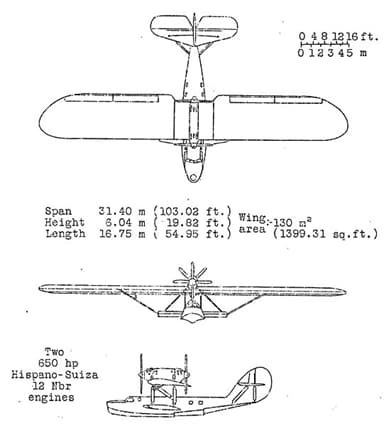
https://commons.wikimedia.org/wiki/File:Late_380_3-view_NACA_Aircraft_Circular_No.136.jpg
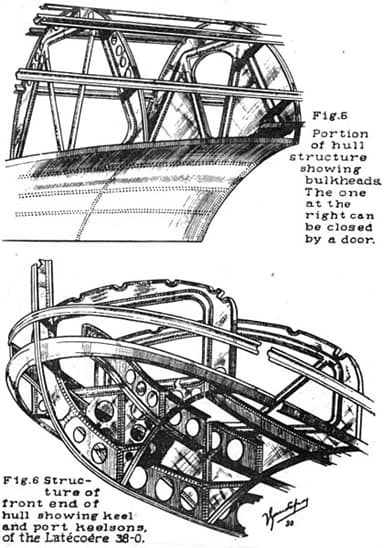
https://commons.wikimedia.org/wiki/File:Late_380_detail_drawing_NACA_Aircraft_Circular_No.136.jpg
SEPTEMBER 1930
French aviators Dieudonné Costes and Maurice Bellonte make the first nonstop westbound heavier-than-air flight across the North Atlantic Ocean, between the European and North American main lands in a Breguet 19 Super Bidon. The 3,633-mile trip (3850 miles according to another source) takes 37 hours 18 minutes.
United States Berliner-Joyce P-16 Biplane Pursuit Aircraft
The Berliner-Joyce P-16 was one of the last U.S. biplanes the authorities designated as a pursuit, as opposed to a fighter aircraft. The company’s original interest lay in monoplane designs, but it diverted its attention to building a two-seat fighter for the United States Army Air Corps. Some 26 were built after the first flight in the fall of 1930.
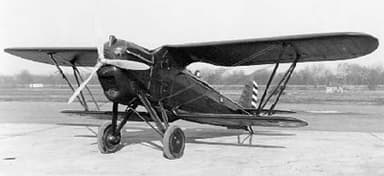
https://en.wikipedia.org/wiki/File:Berliner-Joyce_P-16_(Y1P-16)_060906-F-1234P-003.jpg
The Berliner-Joyce P-16 was a single-bay biplane of unequal span, with the wings forward-staggered. The lower wing was smaller than the upper, unusually of reverse-gullwing type, and mounted at the base of the fuselage. While the upper wing was of normal gull wing configuration. An observer/gunner was located behind the pilot.
The prototype had a supercharged 600 hp Curtiss V-1570 Conqueror V-12 inline engine, although the supercharger fell away in the production version. Besides being the last biplane fighter to enter U.S. service, the Berliner-Joyce P-16 was also the only two-seat biplane fighter to be produced for the army after 1918.
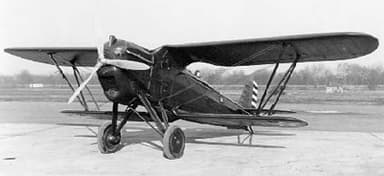
https://commons.wikimedia.org/wiki/File:Berliner-Joyce_P-16_060906-F-1234P-005.jpg
The specification of the Berliner-Joyce P-16 was as follows:
- Length 28 ft, height 10 ft, wing span 34 ft, wing area 290 sq ft
- Empty weight 2,734 lb, max take-off weight 3,968 lb. crew two
- Curtiss V-1570-25 Conqueror inline V-12 piston engine 600 hp
- Maximum speed 172 mph, range 650 mi, bomb load 224 pounds
- Two fixed forward-firing, and one flexible rear mounted 0.30 inch machine guns
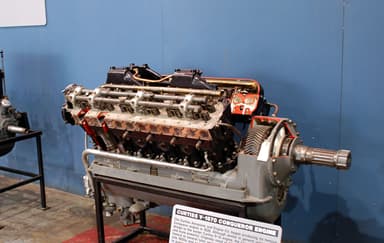
https://en.wikipedia.org/wiki/Curtiss_V-1570#/media/File:Curtiss_V-1570_Conqueror_USAF.jpg
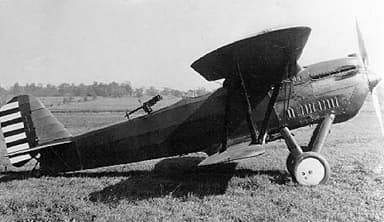
https://commons.wikimedia.org/wiki/File:Berliner-Joyce_P-16.jpg
British Avro Model 621 Tutor, Two Seater Trainer Biplane
The Avro Tutor 621 aircraft was a simple, but rugged basic trainer used by the British Royal Airforce, and many other air arms worldwide too numerous to mention. It seized public attention in 1930 when two aircraft appeared in Alan Cobham’s Flying Circus. Some 620 airplanes were manufactured, including the Avro 626 Prefect and PWS-18 Polish variants.

https://en.wikipedia.org/wiki/File:Avro_Tutor._Gosport._21-05-1937_MOD_45130346.jpg
The Avro Model 621 Tutor used conventional tubular construction with doped linen covering, except for the wing ribs that had some wooden components. The biplane design involved heavily staggered equal-span, single-bay wings, while all but the latest versions had fixed divided main undercarriages with tail skids.
The first deliveries were to the Irish Free State and British Royal Air Forces. The latter adopted the aircraft as basic trainer through to 1939 after retiring its Avro 504s and Hawker Tomtits. Substantial exports began thereafter, although few reached private hands as Avro intended it as a military trainer.
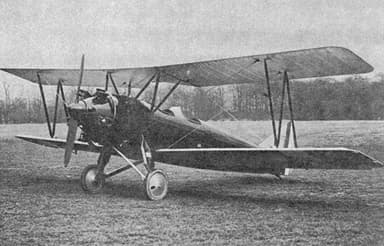
https://commons.wikimedia.org/wiki/File:Avro_621_Trainer_left_front_NACA_Aircraft_Circular_No.119.jpg
The specification on the Avro 621 Tutor was as follows:
- Length 26.5 ft, height 9.5 ft, wing span 34 ft, wing area 301 sq ft
- Empty weight 1,844 lb, gross weight 2,493 lb, crew two
- Armstrong Siddeley Lynx IVC 7-cylinder air-cooled radial piston engine, 240 hp
- Max 120 mph, cruise 97 mph, range 250 mi, ceiling 16,000 ft, climb 901 ft / min
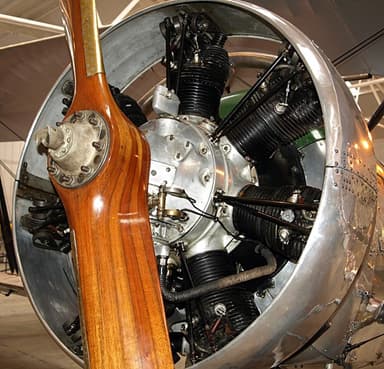
https://en.wikipedia.org/wiki/File:Armstrong_Siddeley_Lynx_OW.JPG

https://commons.wikimedia.org/wiki/File:Avro_Tutor,_The_Shuttleworth_Collection._(12075193575).jpg
American Taylor Cub Personal High Wing Monoplane
Aviation entrepreneur C Gilbert Taylor set out to build a small, lightweight and simple utility aircraft from the principles of his earlier Arrowing Chummy. He had no way of knowing his Taylor Cub would inspire 23,512 aircraft in the Piper J-3 Cub series. The Taylor Club prototype roared into life on September 12, 1930, whereafter a total 353 of this model were made.

https://commons.wikimedia.org/wiki/File:Taylor_J-2_Cub_AN0329027.jpg
The Taylor Cub design featured wings mounted high up on the body, an open cockpit, fabric-covered tubular steel fuselage, and wooden wings. Its original 20 horsepower Brownback “Tiger Kitten” engine could barely lift it off the ground, and the replacement Salmson AD-9 radial engine proved too expensive to maintain.
The aircraft’s prospects improved considerably with the Continental Motors A-40 engine installed in the Taylor Cub E2 variant in 1931. The project finally obtained its airworthy certificate and full manufacturing license on December 7 that year. Production continued through to February 1936.
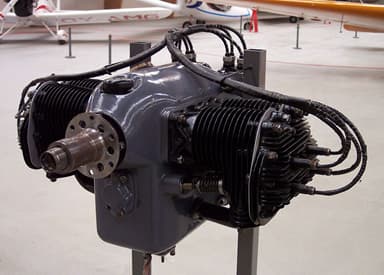
https://en.wikipedia.org/wiki/Continental_A40#/media/File:Continental_A40_l.jpg
The specification of the Taylor Cub E2 variant was as follows:
- Length 22.5 ft, height 6.5 ft, wing span 35 ft, wing area 184 sq ft
- Empty weight 510 lb, max take-off weight 970 lb, crew one, one passenger
- Continental A40-2 4-cylinder air-cooled horizontally-opposed piston engine, 35 hp
- Max 80 mph, cruise 70 mph, range 225 mi, ceiling 12,000 ft, climb 400 ft / min
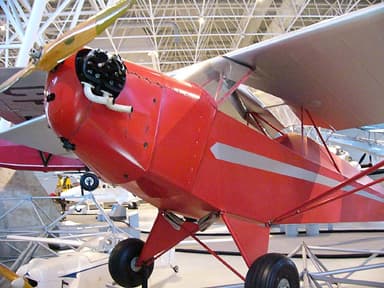
https://en.wikipedia.org/wiki/File:TaylorE-2CubC-GCGE.jpg

https://commons.wikimedia.org/wiki/File:Taylor_Cub_-_Oregon_Air_and_Space_Museum_-_Eugene,_Oregon_-_DSC09861.jpg
OCTOBER 1930
Western Air Express, and Transcontinental Air Transport combine to form Transcontinental and Western Air. This becomes Trans World Airlines in 1950.
American Frank Hawks flies photographs of the final game of the 1930 World Baseball Series to North Beach Airport in Queens, New York in the Travel Air Type R Mystery Ship. The flight takes 20 minutes, demonstrating that fast air courier services are feasible.
A British Handley Page W.8g crashes into high ground in dense fog at Boulogne, France, during a scheduled flight from Paris-Le Bourget Airport outside Paris, to Croydon Airport near London. Three of the six people on board perish.
German Junkers JU 52 Passenger / Transport Aircraft
The Junkers JU 52 was one of most successful aircraft of its genre of its time. Some 4,845 were built between 1931 and 1952 after the maiden flight on October 13, 1930, with a few survivors still in limited use. Junkers intended it as a 17-seat airliner or utility transport aircraft. However, thousands more were produced as military transports after 1933.
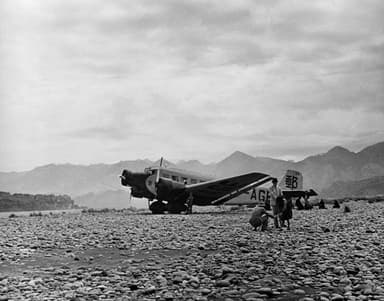
https://commons.wikimedia.org/wiki/File:Ju52_airliner_Eurasia.jpg
The Junkers Ju 52 had a low, cantilever wing, the midsection of which was built into the fuselage forming its underside, and this benefited from a corrugated surface that provided torsional stiffening.
The unusual corrugated duralumin metal skin extended to the fuselage, which was of rectangular section with a domed decking comprising a tubular steel structure. A port-side passenger door also acted as a loading hatch for freight.

https://en.wikipedia.org/wiki/File:Junkers_Ju_52_cockpit.jpg
The specification of the Junkers Ju 52/3m g3e military version was as follows:
- Length 62 ft, height 18 ft, wing span 96 ft, wing area 1,189 sq ft
- Empty weight 12,610 lb, max take-off weight 23,146 lb, two crew, 17 passengers
- Three BMW 132A-3 9-cylinder air-cooled radial piston engines, 725 hp each
- Max 165 mph, cruise 153 mph, range 620 mi, ceiling 19,360 ft, climb 770 ft / min
- Two 0.312 inch machine guns, one dorsal, one in semi-retractable turret
- Up to 1,000 pound-weight bomb load or equivalent cargo
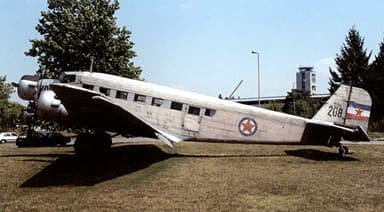
https://commons.wikimedia.org/wiki/File:Junkers_Ju-52_02a.jpg
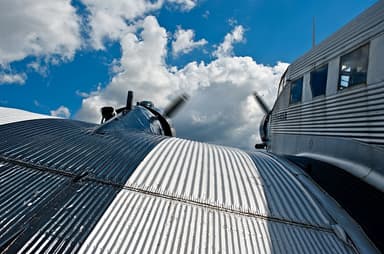
https://commons.wikimedia.org/wiki/File:Ju52_100831.jpg
American Fairchild 100-A Pilgrim High Wing Monoplane Transport
The prototype of the Fairchild 100-A, the Fairchild 100 Pilgrim first took to the air on October 22, 1930. It was one of a series of single engine Fairchild transports, and was up to the task. Some 27 were made, primarily for American Airlines until they were replaced in the late 1930’s.
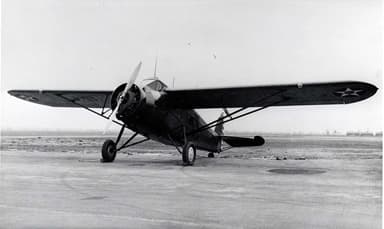
https://en.wikipedia.org/wiki/File:American-Fairchild_Y1C-24.jpg
The Fairchild 100-A was an enlarged version of the earlier Fairchild C-8, and was of similar design. Accordingly, it was a high-wing monoplane employing fabric-covered welded steel tubing for the fuselage and tail section, and strut-braced, wooden,fabric-covered wings.
The aircraft served as a small commercial airliner, bush plane, air ambulance, and crash rescue aircraft at air force training airfields for use in emergencies. It had a then-remarkable ability to take off and land in a relatively short distance, and delivered reliable, versatile service.
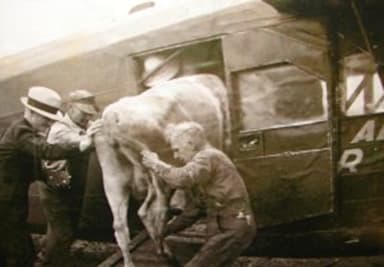
https://www.wy2.org/aircraft/pilgrim.php
The general specification of the Fairchild 100-A was as follows:
- Length 39 ft, height 11.5 ft, wing span 57 ft, wing area 459 sq ft
- Empty weight 4,195 lb, gross weight 7,070 lb, crew one, nine passengers
- Wright R-1820-1 Cyclone nine-cylinder, air cooled radial engine, 575 hp
- Max speed 135 mph, cruise 118 mph, range 510 mi, ceiling 13,600 ft

https://www.wy2.org/aircraft/pilgrim.php
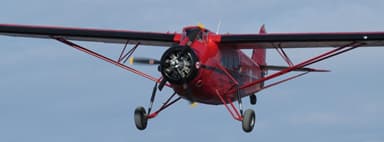
https://www.wy2.org/aircraft/pilgrim.php
NOVEMBER 1930
A Dornier Do R4 Superwal flying boat disappears over the Mediterranean Sea during a flight from Barcelona, Spain, to Marseilles, France, with the loss of all six people on board.
An American Ford 5-AT-C Trimotor crashes on landing at Ford Airport in Dearborn, Michigan, killing both people on board.
British Handley Page HP.42 and HP.45 Large Passenger Airliners
The Handley Page H.P.42s and H.P.45s had the distinction of being the largest airliners in regular use in the world, upon the type’s introduction in 1931. They first flew on November 14, 1930, whereafter four of each type were built.
The main distinction between them was the H.P.42 was optimized towards greater range at the expense of payload, while the H.P.45 inverted these priorities, allowing it to carry more passengers over shorter distances.
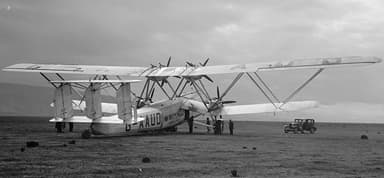
https://en.wikipedia.org/wiki/File:Handley_Page_H.P.42_Hanno_2.jpg
The two versions were both large unequal-span sesquiplanes, with truncated lower wings, and fuselages that extended further forward than convention. They used an all-metal approach in their construction, except for a few areas such as fabric coverings present on the wings, tail surfaces and rear fuselage.
The forward section of the fuselage was a metal monocoque, while the rear was formed from welded steel tubes. Pundits noted this construction appeared quite strong, although it was also relatively expensive.
The crew compartment was fully enclosed which was still quite unusual. While the passenger compartment was in two sections, one ahead of, and the other behind the wing. All accommodation was first class and unashamedly luxurious.
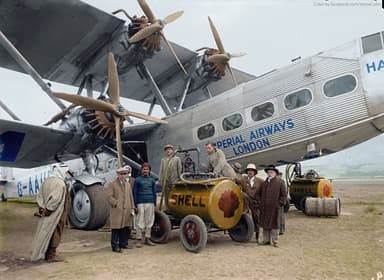
https://en.wikipedia.org/wiki/File:Handley_Page_H.P.42_Hanno.3.jpg
The specification of the Handley Page H.P.42e was as follows:
- Length 92 ft, height 27 ft, wing span 130 ft, wing area 2,989 sq ft
- Empty weight 17,740 lb, max take-off 28,000 lb, 4 crew, 24 passengers
- Four Bristol Jupiter XIF 9-cylinder air-cooled radial piston engines, 490 hp each
- Max speed 120 mph, cruise speed 100 mph, range 500 mi, climb 790 ft / min

http://barthworks.com/aviation/aviation_historic_artifacts/handleypage/handleypage.htm
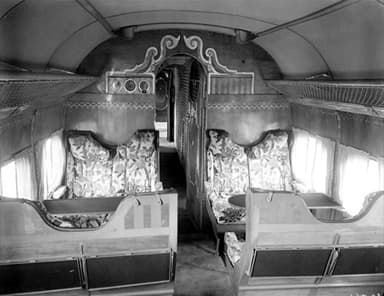
http://barthworks.com/aviation/aviation_historic_artifacts/handleypage/handleypage.htm
British Fairey Hendon Monoplane Heavy Night Bomber
The Fairey Hendon was the first all-metal, low-wing monoplane to enter service with the Royal Air Force. It first flew on November 25, 1930 although it only entered service in 1936, after the prototype crashed the following year and was severely damaged. Fairey Aviation only built 15 aircraft in the end, however all were grounded by 1939.
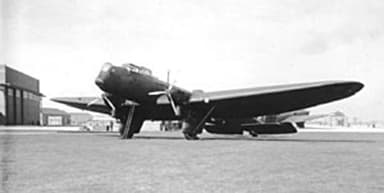
https://en.wikipedia.org/wiki/File:Fairey_Hendon_1934.jpg
The Fairey Hendon was a low-wing, cantilever monoplane with a fixed tailwheel undercarriage. The fuselage had a steel tube structure with fabric covering, accommodating the pilot and radio operator/navigator. There were gunners in nose, dorsal and tail positions.
The prototype crash, and delayed rebuild allowed the Handley Page Heyford to take up the slack with orders. The remaining ones were largely cancelled in favor of the Armstrong Whitworth Whitley, after it displayed much higher performance.
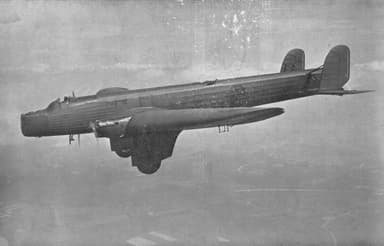
https://en.wikipedia.org/wiki/File:Fairey_Hendon_K1695.jpg
The specification of the Fairey Hendon II was as follows:
- Length 60.5 ft, height 18.5 ft, wing span 101.5 ft, wing area 1,146 sq ft
- Empty weight 12,773 lb, gross weight 20,000 lb, crew five
- Two Rolls-Royce Kestrel VI V-12 water-cooled piston engines, 600 hp each
- Max 152 mph, cruise 133 mph, range 1,360 mi, ceiling 21,400 ft, 6,500 ft / 9 min
- Three 0.303 inch Lewis guns in nose, dorsal and tail positions
- Bomb load 1,660 pounds weight, in bomb bay in fuselage center
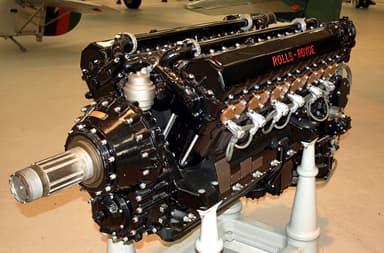
https://en.wikipedia.org/wiki/Rolls-Royce_Kestrel#/media/File:RRKestrelXVI.JPG

https://en.wikipedia.org/wiki/Fairey_Hendon#/media/File:Fairey_Hendon_ExCC.jpg
https://en.wikipedia.org/wiki/Handley_Page_H.P.42
https://en.wikipedia.org/wiki/Fairey_Hendon
DECEMBER 1930
The Junkers W 34 Bolivar makes the first international flight from Venezuela to Colombia to commemorate the centennial of the death of Simón Bolívar.
Soviet Tupolev TB-3 Extra Large Monoplane Heavy Bomber
The sheer size of the Tupolev TB-3 heavy bomber allowed the Soviet Union to experiment with a variety of new military strategies. These included deployment as a mother ship for up to five fighter aircraft, transporting military personnel and light battle tanks, and delivering paratroopers who gathered on the huge wings before launching forth.
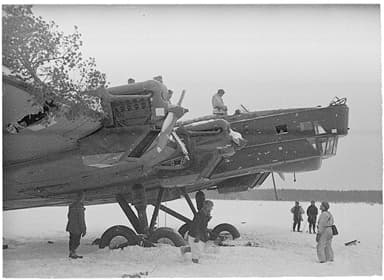
https://commons.wikimedia.org/wiki/File:Tupolev_TB-3_SA-kuva_7361.jpg
The Tupolev TB-3 (designated ANT-6 in civilian operations) took its first flight on December 22, 1930, and rushed into production despite vibration concerns. Nonetheless, it performed well with modifications and in the end 818 were produced. Some of these continued on active service throughout World War II.
The aircraft was an all-metal construction, using innovations pioneered by Junkers. The frame was composed of V-section beams covered with a non-stressed, corrugated skin. While the cantilever wings were supported by four tube-section spars. Technicians could walk anywhere in soft shoes without damaging the skin.

https://en.wikipedia.org/wiki/File:Zveno-SPB.jpg
The general characteristics of the Tupolev TB-3 were as follows:
- Length 80 ft, height 28 ft, wing span 137 ft, wing area 2,524 ft
- Empty weight 24,692 lb, max take-off weight 42,449 lb, crew 8 to 10
- Four Mikulin M-17F V-12 liquid-cooled piston engines 705 hp each
- Max 132 mph, range 1,200 mi, ceiling 15,700 ft, climb 246 ft / min
- Six to eight machine guns, 11,000 pound weight bomb load

https://en.wikipedia.org/wiki/File:Tupoljev_TB-3.svg
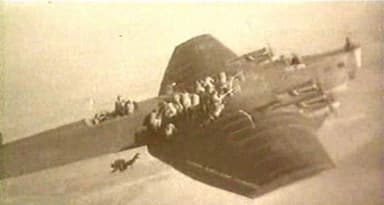
https://en.wikipedia.org/wiki/Tupolev_TB-3#/media/File:Paratroopers_jumping_from_Tupolev_TB-3.jpg




